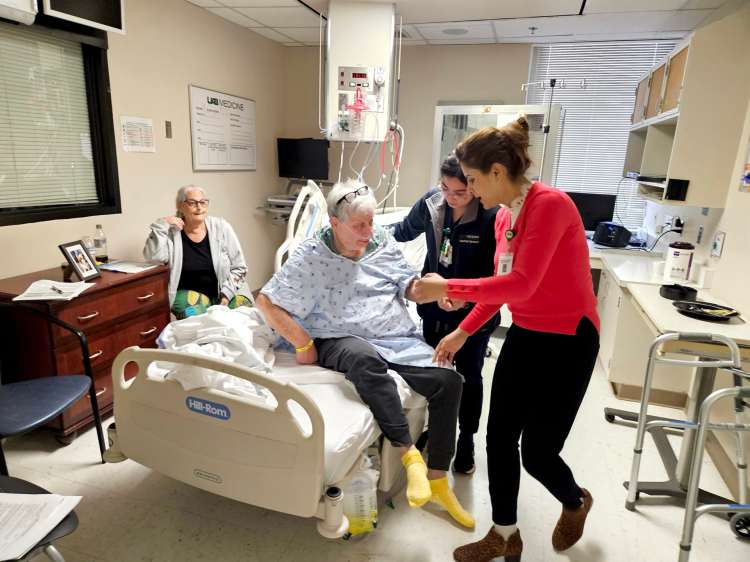Standardized, but never routine: SPs bring human factor to sim

For Bart and Debra Reisman, volunteering as standardized patients isn’t about pretending to be sick—it’s about helping learners prepare for the real-world challenges they’ll face in health care.
The Reismans have spent the past decade lending their time and talents to UAB’s Center for Interprofessional Education and Simulation (CIPES), through which they’ve participated in innumerable simulation experiences with UAB Clinical Simulation. Standardized patients (SPs) are individuals trained to portray patients, consistently demonstrating medical histories, physical exam findings and emotional responses to give learners realistic, hands-on experiences.
It’s a unique type of acting, and for the Reismans—both retired and looking for a way to stay active—it’s also a way to make a difference.
“We were just looking for a reason to get out of the house, get together with people and do something constructive,” Debra said.
They quickly discovered the profound impact SPs have, not only on learners’ clinical skills but also on their confidence and bedside manner.
“I like seeing how they progress,” Debra said. “These are going to be our future doctors and nurses. I want to make sure they’re doing things the right way.”
And preparing them for the unexpected.
“They need to learn how to deal with different types of patients,” Bart said. “Not everybody’s going to react the same. Some might get irritated, some might fly off the handle, and others are cool as can be.”
David James, DNP, clinical assistant professor in the UAB School of Nursing and program development manager for UAB’s Department of Interprofessional Practice and Training, agrees.
“The advantage here is the SPs provide the (learners) with feedback,” he said. “They receive feedback about their personal interactions and … get to reflect on their own performances.”
That opportunity for self-reflection is often cited by learners themselves.
“It’s a relatively stress-free way of improving your clinical response to (certain) types of situations,” said Jose Cuicahua Perez, R.N., assistant nurse manager at UAB Highlands.
Bart has seen that transformation firsthand.
“When they come back through those same labs, it’s amazing to see the progression,” he said. “I can’t remember them, but they remember me. It’s not just about academics—it’s about confidence, too.”
For Debra, one scenario in particular stands out: portraying a patient with post-traumatic stress disorder (PTSD). It’s personal—her son served two tours overseas.
“When he first came back, he was really struggling,” she said. “We kept stressing to him, ‘Go talk to somebody. You have to, or you’ll end up in a deeper hole.’ I never thought about therapy before, but now I believe in it. You have to talk to somebody.”
And that’s exactly what SPs help teach learners: that patients are more than symptoms to diagnose—they’re people with stories.
“That’s not something they get from the textbook,” Debra added. “They need to know that we’re human.”
Interested in incorporating standardized patients into your next simulation? UAB Clinical Simulation can help design high-impact, SP-driven scenarios tailored to your team, department or unit. To learn more, email simulation@uabmc.edu.
UAB Medicine’s Clinical Simulation program offers opportunities for individuals and teams across UAB Medicine and beyond to practice before they deliver care. We encourage all who provide and support patient care to “Sim First.” Together, we can put our patients’ safety first.




0 Comments